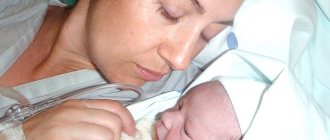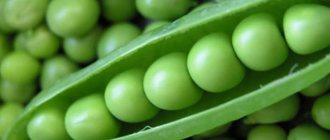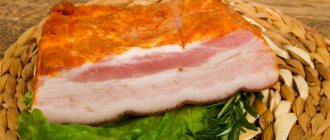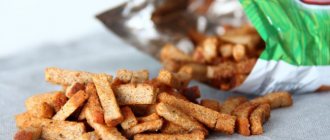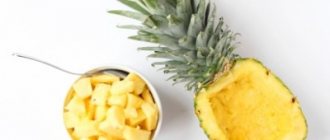Why do you need a special diet after a caesarean section?
Caesarean section is a surgical abdominal operation to remove the fetus. It is carried out by dissecting the abdominal cavity and uterus. To gain access to the abdominal cavity, the surgeon cuts through the skin and muscles of the abdomen (this is in a nutshell). For the operation, local or general anesthesia is used. And all this is important to know in order to understand why a diet is needed and why it is important.
The uterus and intestines are very close to each other . Any pathological processes in the intestines, such as stagnation of feces or bloating, disturb the sutured uterus, which after pregnancy and surgery is trying to return to physiological norm. And any irritation in this case can lead to bleeding.
Dissection of the abdominal cavity also has some nuances. With constipation, a woman normally strains to go to the toilet. And with the muscles and uterus sewn up, it is completely undesirable to push, since the consequences will not keep you waiting. In addition, anesthesia, regardless of whether it is local or general, has a negative effect on the digestive processes in the body. Although in general this effect is many times stronger.
The formation and removal of feces from the body is directly affected by what you eat. And taking into account all of the above, it is important that the food that the body has to process meets certain requirements:
- do not cause constipation;
- be easily digestible;
- do not provoke gas formation;
- consist of non-allergenic products.
Uterine bleeding is not always easy to stop, and broken sutures will need to be reapplied. So it’s better to endure it for a few days and eat right, in this case the diet is really very important.
Nutrition Basics After Cesarean Section
To quickly recover after surgical childbirth, you need to eat well. But not in the sense of eating your fill three times a day. Nutrition in the postoperative period has its own characteristics that are important to know. When to eat, how much to eat, what you can and should eat after a caesarean section, and what you should completely avoid, we will look at it in order.
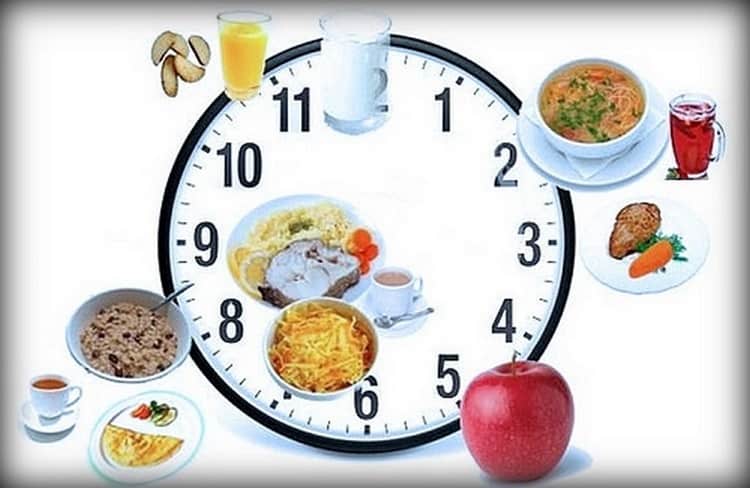
Mode
This is quite important in everyday nutrition - eat strictly on time . They talk about this in school, but few people understand why it is important. In the postpartum and postoperative periods (we have two in one, if you remember), this is many times more important:
- Milk . It must have time to be developed. To do this, you need to eat regularly.
- Digestion. It just so happens that the body remembers everything. If you are used to eating at 8 am, by this time the body begins to produce gastric juice and the enzymes necessary for digestion. This allows you to get the most nutrients from what you eat.
- Needs. The body needs strength to recover, but you can’t eat a lot. Therefore, it is important to satisfy the body’s needs as much as possible from a small amount of food.
The diet comes down to the fact that you will eat 5-6 times a day in a timely manner at more or less equal intervals. For example:
- 7:00 breakfast;
- 10:00 second breakfast;
- 13:00 lunch;
- 16:00 afternoon tea;
- 19:00 dinner;
- 21:00 light snack.
This is only an approximate diet; there may be more meals, but there should not be fewer. In this case, it is advisable to strictly observe the snack time, at least for the rehabilitation period.
Volume
You will have to eat in small portions. This means often (we talked about this in the regime), but in small portions. These portions depend purely on the individual woman; it makes no sense to give private recommendations. But the general advice is that you need to eat, but you need to get up from the table hungry . The total volume eaten in one sitting should not exceed 100 ml. Now it is important not to overload the digestive system, no matter how much you want to eat.
Separately, doctors touch on the issue of drinking during this period. You also need to drink a little, but it is recommended to consume up to 2 liters of liquid per day. If a woman is prone to edema, then up to one and a half liters.

What to eat
When it comes to diet after cesarean, what you eat is important. The volume is limited, therefore it is important to satisfy the maximum needs from the minimum amount of food. In addition, the products should be easily digestible and not overload the intestines. In general, here's what you can eat after a caesarean section:
- cereals and pasta;
- vegetables and fruits;
- meat and dairy products;
- fish, eggs.
But there are a number of foods that are not only possible, but necessary to eat:
- muesli;
- buckwheat;
- pearl barley;
- black bread;
- vegetable oils;
- boiled beets, pumpkin, zucchini;
- baked apples;
- dried fruits (prunes and dried apricots);
- dairy products.
All this contributes to the formation and easy removal of feces.
What you can't eat
Of course, you can’t eat salty, pickled, spicy, fried, and the list goes on . You yourself understand this. But there are specific products that should be strictly taboo in your situation:
- semolina and white bread;
- baked goods, rice;
- blueberries, quince;
- pears, legumes;
- raw vegetables (especially cabbage);
- honey and citrus fruits (tangerines, oranges);
- beef and lamb;
- mayonnaise and seafood.
This list consists of those products that are strong, increase gas production, are difficult to digest and are natural allergens . They should not be eaten either after a cesarean section or during breastfeeding, since approximately the same thing will happen in the baby’s intestines as in yours.
What can you eat after a CS?
The return to the “prenatal” lifestyle after the end of the operation follows the same principles as after any abdominal intervention. In the first hours, the young mother needs to recover from anesthesia: severe nausea, dizziness, and smooth muscle atony, leading to intestinal paresis, are likely.
After general anesthesia, cardiac dysfunction and a decrease in blood pressure are more likely to occur. Depending on the progress of the operation, the patient may be prescribed blood plasma infusion or infusion therapy. During the first two days, medications are administered by drip: solutions of potassium, glucose, cardiac glycosides.
Sorry, there are no surveys available at this time.
Nutrition after a caesarean section for a nursing mother is necessarily gentle, taking into account the changes occurring in the body. It is unacceptable to be frivolous in this matter. At first, the physical condition simply does not leave room for the full functioning of the intestines; it takes some time for it to regain the ability to break down food.
We suggest you read: Laxatives for pregnant women, safe and effective drugs
All that can be eaten immediately after a cesarean section, as soon as the anesthetic comes out, is clean water. Fasting is necessary until the enzymatic system is ready to work. There is no need to be afraid of exhaustion, since the mother’s body will remain under the influence of nutrient solutions and medications for some time. In addition, there is no appetite as such after anesthesia.
After how long you can eat regular food, how to eat after a cesarean section by day, the doctor will tell your mother in detail as soon as she is able to perceive new information.
First day
Diet after cesarean section in the first days of being in the maternity hospital is a very important stage of recovery, especially if the mother plans to breastfeed the baby in the future. Immediately after completing all manipulations and suturing, eating any food is prohibited. The body should direct its forces not to digestive processes, but to recovery. This is a day of rest. You can eat later.
Active milk production usually does not occur immediately after surgery, however, to prevent engorgement of the glands, the amount of fluid you drink is limited. You are allowed to drink 3–4 glasses of non-carbonated water per day: regular or table mineral water. To stimulate the enzymatic system, you can add a few grams of apple or other juice from fruits growing in our region (grapes, cherries, etc.): 1 tsp. per glass.
Second day
To awaken intestinal activity on the second day, the young mother is prescribed drips of tonic solutions. Solid food is still prohibited during this period. In order for the gastrointestinal tract to gradually return to normal, a special recovery diet for operated patients, consisting of liquid dishes, is indicated.
Allowed:
- vegetable and secondary (the first water is always drained) meat broths;
- berry compote and thin jelly;
- rice and oatmeal broth;
- kefir or whey.
At one time, it is allowed to consume about 150-200 ml of warm food at least 4 times throughout the day. If you feel well, you can add 0.5 tsp to broths or cereal decoctions. oils
A gradual return of appetite and a feeling of hunger are a favorable sign. He points out that when you can eat more serious food, there will be no problems with its digestion.
The third day
On the third day after surgery, the menu can be gradually expanded. Of course, you can’t eat whatever you want.
The diet should correspond to the dietary table recommended after surgery:
- mashed boiled meat and fish in the form of meatballs, soufflé;
- liquid porridges: semolina, rice, oatmeal;
- vegetable soups and well-mashed puree;
- baked fruits;
- steam omelette;
- mashed potatoes;
- soft cottage cheese;
- fermented milk range without dyes and sugar;
- white crustless bread or crackers soaked in broth;
- unsweetened and weak tea;
- compote or juice diluted with water.
Nutrition in the first days after cesarean section. Menu
If a cesarean section is planned, you will be put on a diet 3-5 days before surgery . But it happens that this is an emergency, and there could be no talk of any preparation. But in any case, after surgery (or childbirth), you can’t escape diet. We will present an indicative menu for the first 5 days after cesarean in the form of a table:
| Day | Breakfast | Lunch | Dinner | Afternoon snack | Dinner |
| First | Everything you need is introduced into your body through intravenous drip infusions. In addition, you can drink a little mineral water without gas. | ||||
| Second | Weak tea, yogurt | Oatmeal, kefir | Diet chicken broth, black bread | Dried fruit compote, cottage cheese | Diet broth, chicken, black bread |
| Third | Weak tea, cottage cheese | Wheat porridge, steam cutlet, kefir | Light chicken soup with vegetables, chicken, black bread | Yogurt, baked apple, compote | Buckwheat porridge, steam cutlet, compote |
| Fourth | Cheese sandwich, weak tea | Cottage cheese, baked apple, compote | Buckwheat soup, lean meat, black bread | Vegetable puree, green apple, kefir | Boiled potatoes, stewed lean meat, compote |
| Fifth | Weak tea, cottage cheese | Oatmeal, dried fruits, kefir | Vegetable soup, fish stew, black bread | Curd casserole, cocoa | Buckwheat porridge, stewed lean meat, compote |
As intermediate snacks, you can take low-fat curds, yoghurts, and green apples (a little at a time). Some doctors even allow dark chocolate in very small quantities.
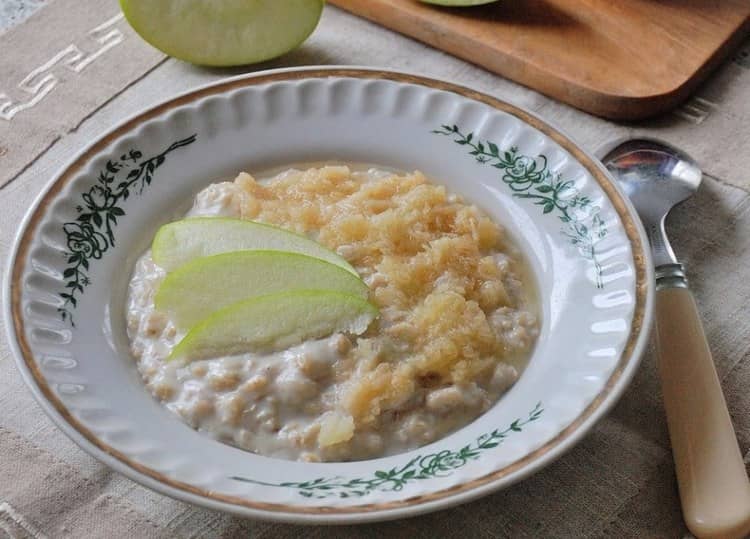
In addition to eating, it is important to remember to drink. You can drink compotes, weak tea and still mineral water. The total volume of drinking per day should be about one and a half liters.
Any food should be at room temperature or lukewarm, but in no case cold or hot.
Approximate menu from 5 days
After five days, you can diversify your diet. But you're still recovering from a cesarean section, remember that. You can safely include in the menu:
- milk (up to 500 grams per day);
- all vegetables except carrots, cabbage - very carefully;
- any meat except pork and lamb;
- any fruits except citrus and red fruits;
- butter;
- eggs (1-2 per day);
- sufficient amount of liquid;
- multivitamin complexes (after consultation with a doctor).

You can no longer only eat boiled and steamed food. You can diversify your diet with stewed and baked dishes with a very small amount of spices. To drink, you can safely drink weak tea, weak coffee with milk (if there are no contraindications), natural juices, cocoa, fermented baked milk, kefir, still mineral water.
Gradually you can switch to your usual diet, increasing portions. If you ate 6 times a day before, switch first to 5 meals a day, then to 4 meals a day; there is no need to rush in this matter.
Diet and menu for constipation
In principle, all women in labor are afraid of constipation as a phenomenon. But it is observed especially often after cesarean section, and precisely as a result of non-compliance with the diet. If you have such a problem, it makes sense to make some adjustments to the menu. That is, give up everything that strengthens and lean on what weakens. Products that are attached include:
- semolina and rice;
- white bread and baked goods;
- boiled chicken egg white;
- carrots and blue ones;
- any sweets.
It is important to exclude these foods from your diet. Otherwise, you can consume all the products described in the sample menu in the table above, many of them have a laxative effect or are neutral.
If constipation is a real problem, you can prepare an infusion of anise, fennel and caraway seeds. Just pour two teaspoons of the mixture of these seeds with a glass of boiling water and wait until the drink cools. You need to take it one third of a glass three times a day, preferably 30 minutes before meals.
Another lifesaver would be a decoction of figs in milk or water (laxatives are generally contraindicated during breastfeeding). Pour two tablespoons of figs into a glass of boiling water or just boiled milk, let cool. You need to take this drink three or four times a day, one tablespoon at a time. In addition, some mothers are saved by potato juice diluted in half with water. It is taken a quarter glass up to three times a day, preferably before meals, 20-30 minutes.
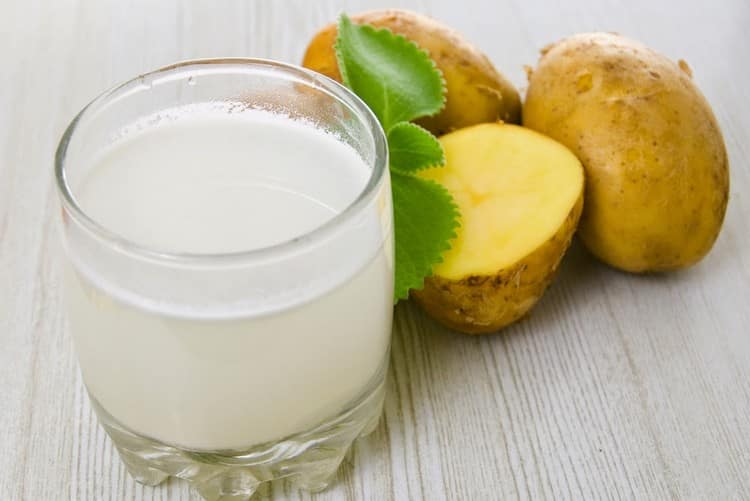
Diet and diet
The main question of a happy mother after childbirth is what can she eat, in what volume and how many times? Every new day brings recovery, and now the pain and worries are forgotten.
First day
You should not eat solid foods immediately after giving birth. It is recommended to drink non-carbonated mineral water. To restore strength, you can add lemon juice (1:10) or other juice to the water. Lemon juice is preferable as it has disinfecting properties and strengthens the immune system.
Instead of nutrition, a woman in labor after a cesarean section is given an IV with a set of necessary microelements and vitamins. However, this diet is followed only on the first day; on the second day the menu changes.
Second day
If there are no postpartum complications, the second day menu includes the following dishes and products:
- meat broths with vegetables (except pork);
- beef or chicken puree;
- cottage cheese without fat;
- natural yogurt with lactobacilli;
- hot drinks - tea, jelly, compote.
The diet for caesarean section completely excludes fat, as it is a difficult-to-digest food.
How to properly prepare broth for a young mother? To do this, you need to drain the water three times after boiling and fill the pan with meat with fresh cold water each time. It is recommended to add vegetables to the broth, but do not cause gas formation. Potatoes, onions, cabbage and garlic cannot be added to the broth.
Third day
If the gynecologist allows it, you can eat the following foods and dishes:
- steamed meatballs/cutlets from low-fat meat;
- porridge cooked in water without milk;
- pureed meat or vegetables;
- mashed apples;
- low-fat cheese.
If your stool is abnormal, it is recommended to drink low-fat kefir.
After the third day, a woman can eat any food that is not prohibited during breastfeeding. In case of postpartum complications, the menu must be clarified with a gynecologist.
The diet after a cesarean section during the first month should provide the woman’s body with all the necessary nutrients and biologically active substances.
Both mother and child need:
- vegetable and animal protein;
- natural fats;
- complex carbohydrates;
- folic acid, riboflavin, vitamins E, D, A, ascorbic acid;
- iron, calcium, magnesium, selenium, phosphorus, copper, potassium and other minerals.
If a cesarean section did not produce any complications, and the state of the gastrointestinal tract is satisfactory, then in this case the woman’s diet can be as varied as possible. Of course, there are still exceptions and they must be respected. Some foods are prohibited during lactation. Specialists determine the list of permitted products after discharge:
- milk and dairy products;
- vegetables that do not lead to increased gas formation;
- cottage cheese;
- meat;
- apples, pears, peaches, bananas, plums;
- vegetable oil and butter;
- eggs;
- vitamin complexes;
Important: bananas are a rather controversial product because, despite their widespread sale, they are still an exotic fruit for us. If there are any prejudices against them, then it is better to exclude them from the diet.
The products presented above will not harm the woman and her health in any way, nor will they lead to allergic reactions in the baby. However, the diet still has its limitations. The most difficult period is the first week after cesarean. At this time, it is better to remove from the diet:
We invite you to familiarize yourself with: Types and features of installing braces for children
- honey;
- garlic;
- citruses;
- Exotic fruits;
- strawberries;
- mayonnaise and spices;
- carrot;
- smoked products;
- canned food;
- sausages;
- chocolate.
Proper nutrition at this stage will help improve the quality of lactation and significantly shorten the recovery period for the woman in labor. Thus, she will be able to quickly return to normal life without risking her health and the health of her baby.
Approximate menu for weight loss after cesarean
Many mothers are concerned about the question of how to remove belly fat after childbirth. But at least they can do sports, although not right away. But - how to remove the belly after a caesarean section - that’s the question (in addition to all the delights, it also has a scar from a suture). And not only the stomach, sides and butt also became fat during pregnancy and the rehabilitation period.
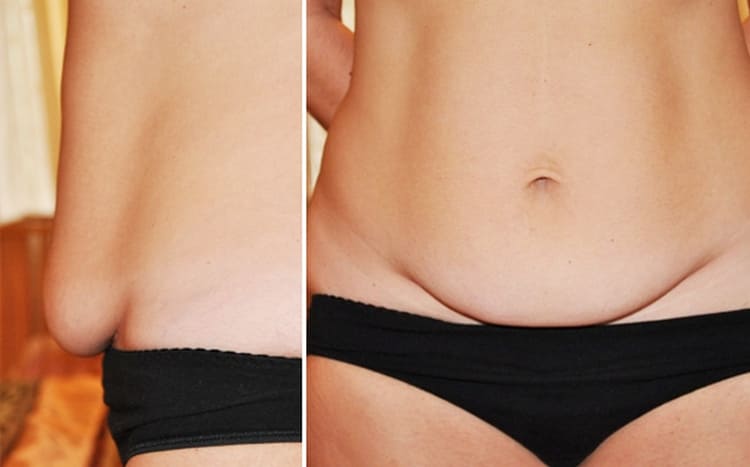
Basically, recommendations on how to lose weight after childbirth are also suitable in our case, but there is one “but”. It is necessary to begin active actions no earlier than two months after the operation. Just to avoid all sorts of complications.
The main principle of your menu should be the phrase “everything you need enters the body and nothing unnecessary.” It is best to leave meals in fractions. The menu must include:
- lactic acid products;
- vegetables and fruits;
- porridge;
- lean meats;
- fish.
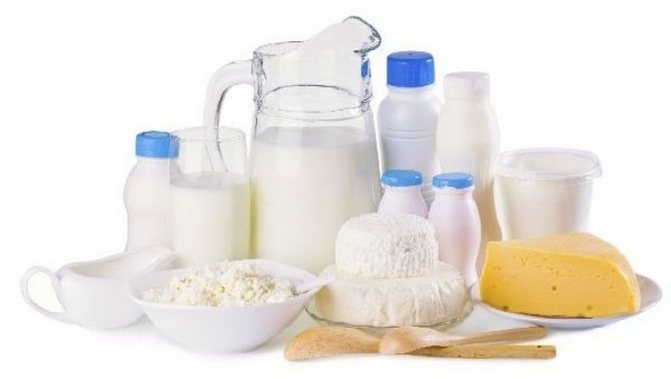
The following should be excluded from your diet:
- excess flour and sweets;
- fatty, fried, spicy, smoked;
- fast food and any canned food;
- soda.
In general, if you do not have problems with metabolic disorders, you just need to eat right. After all, you are breastfeeding, and this process also burns a certain amount of calories. Balance your diet according to BJU (proteins, fats, carbohydrates).
On average, per day you need to consume:
- about 120 grams of protein;
- up to 100 grams of fat;
- up to 400 grams of carbohydrates, only a quarter and which will be simple.
The total calorie content of your daily menu should be 3000 kcal. In addition, walks are important, and after two months, playing sports, at least in terms of strengthening the muscles of the back and abdomen.

Meals on the sixth day
As a rule, by the sixth day after a cesarean section, you can switch to your usual diet . But at the same time, it is necessary to avoid foods that cause flatulence (legumes, fresh baked goods, carbonated drinks).
Important! If a woman is breastfeeding, some foods will have to be temporarily excluded from her diet. After all, certain foods can cause an allergic reaction in a baby.
A woman should avoid products such as:

Coffee;- Chocolate;
- Citrus fruit;
- Honey;
- Seafood;
- Red fish;
- Mushrooms;
- Nuts;
- Alcoholic drinks.
We recommend reading: Diet of a nursing mother - the first month
Many women after childbirth are concerned about the problem of excess weight and therefore they limit themselves in food in order to lose weight. But you definitely shouldn’t starve, because the body needs nutrients to recover. The basis of the diet should be cereal porridges, lean meats and fish, as well as fresh vegetables. It is also useful for a nursing mother to eat fruits, but they need to be introduced into the diet gradually .
First, they begin to introduce apples and pears, after which you can try bananas. After introducing a new fruit into the diet, you need to monitor the baby’s reaction to see if he has an allergic reaction to the product. We recommend reading: What fruits can a nursing mother eat?
In addition, the diet must include fermented milk products, which will help fight constipation . Also, fresh and stewed vegetables, baked fruits (for example, apples), cereal porridges, and wheat bran will help in the fight against this delicate problem.
Thus, the therapeutic diet provides the mother’s body with the necessary nutrients and promotes the woman’s speedy recovery after surgery. In addition, proper nutrition normalizes the functioning of the gastrointestinal tract and prevents the occurrence of postoperative intestinal disorders.
Valeria Grigorova, doctor, medical columnist
15, total, today
( 173 votes, average: 4.49 out of 5)
Kiwano: benefits and harms
What can a nursing mother eat: proper nutrition during lactation
Related Posts
Video: food after cesarean section
If you are preparing to give birth by cesarean section, be sure to watch this video. Mom shows what she is allowed to eat and on what day, what she is fed in the maternity hospital during the postoperative period.
Nutrition issues were, are, and will remain fundamental throughout pregnancy and during breastfeeding. The diet of a woman who has undergone a caesarean section deserves special attention. Limitations are imposed not only by the fact that the baby may have gas, but also by the fact that you were under anesthesia and had abdominal surgery. Doctors advise young mothers on this issue more than once, but rarely explain exactly why diet is important and how to eat properly after leaving the hospital.
If you yourself know what a caesarean section is, tell us about your menu in the comments. Not all doctors are verbose on this subject; this information will provide guidance to mothers who are experiencing this for the first time, and will help prevent complications associated specifically with poor nutrition. I wish you successful rehabilitation and quiet working days as a young mother!
What do doctors think about nutrition?
Nutrition for a nursing mother after a cesarean section is complicated by the need to be careful when combining different foods. For complete and timely healing of sutures, it is necessary that the gastrointestinal tract works smoothly and that fermentation, constipation and diarrhea do not occur. Severe tension in the abdominal muscles while going to the toilet or a sudden change in the internal microflora can lead to undesirable consequences, including suppuration or suture dehiscence.
In the first few weeks - approximately until the end of the first month after the birth of the child, the diet must be treated strictly, avoiding violations. This is necessary not only for the health of the child, but also for the well-being of the mother herself. You should not consume foods on the list of prohibited or recommended restrictions, even if there are no reasons for concern.
We suggest you read: Is it possible for pregnant women to have armpit sugaring?
It is advisable to eat food at the same time - 30-40 minutes before the next feeding. This promotes better milk flow. It is useful to eat several times a day: at least 5–6, in small portions.
Starting from the second month, doctors recommend enriching the diet with new foods weekly, following the rules for their introduction. Most domestic pediatricians advise not to include potential allergens in the diet until the end of breastfeeding: honey, berries and red fruits, lemons, tangerines, oranges, salmon fish, products containing synthetic dyes and flavors.
In stores, you will have to avoid most names in the gastronomic departments. It is recommended not to eat ready-made food, but to prepare all meals at home. This will avoid consuming large amounts of salt, hidden fats and carcinogens.
Strict restrictions up to half-starvation during breastfeeding are unacceptable. A woman’s diet should replenish the costs of all the beneficial substances that milk production leads to.
Due to hormonal changes in the body and vitamin and mineral deficiency, a young mother may experience long-term health problems:
- hair loss begins;
- teeth are destroyed;
- hemoglobin levels decrease;
- skin peels;
- physical fatigue sets in quickly;
- often plagued by insomnia, bad mood, and depression may develop.
Severe exhaustion of the mother during breastfeeding also affects the child. Even with a sufficient amount of milk, the protein and fat content in it decreases, and the baby begins to suffer from a lack of nutrients.
To obtain the full spectrum of bioactive substances, it may be necessary to take special vitamin complexes for nursing mothers.
If frequent allergic reactions or colic occur in a baby despite proper nutrition, the mother should not only review the diet, excluding potentially harmful foods from it. It is more adequate to conduct a detailed medical examination of the baby. Sometimes the cause of whims and anxiety is not the composition of milk, but developmental defects and neurotic deviations.
If, after reaching 3 months of age, the child does not show disturbing reactions and tolerates all the innovations in the mother’s menu well, most restrictions can be removed. Even potential allergens, such as chocolate, honey and citrus fruits, are recommended to be consumed little by little, accustoming the child’s body to them.
It has long been proven that many concerns about the composition of mother's milk are speculation. Substances contained in food do not penetrate into it directly. Everything needed in the biological fluid comes from the mother’s blood. Nutrient ions diffusely overcome the dense blood-milk barrier. And the food consumed by a woman goes mainly to replenish expended resources.
Foods to avoid throughout breastfeeding:
- hot seasonings, including onions and garlic;
- modified fats and dyes;
- energy and alcoholic drinks.
